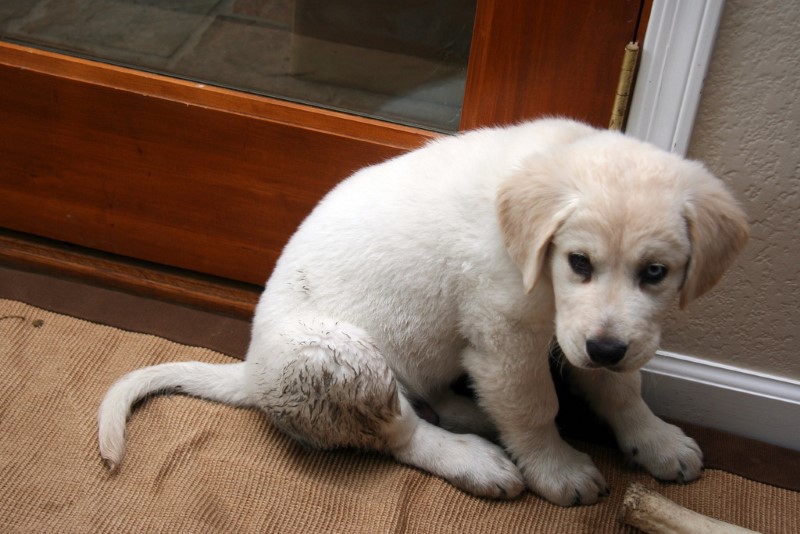If it’s one thing every dog owner dreads, it’s finding out that their beloved canine companion is infested with fleas. These pesky little bloodsuckers literally sap the life out of your pet and cause major discomfort and distress. Even worse, a flea infestation can move from your dog, and into your home and begin to bite people. There are numerous solutions these days to eradicate fleas and keep them from making their home on your dog, so avoid ever having to see these symptoms by getting the proper treatment before the problem even starts.
1. Excessive scratching

It’s natural for dogs to scratch themselves with some regularity, but if you see your dog scratching obsessively, and might be whining and crying at the same time, there’s a good chance that your dog is suffering from a flea infestation.
2. Licking

Oftentimes excessive scratching will irritate the dog’s skin and may lead to skin irritation, which he or she may react to by licking a particular area or areas excessively. Sometimes a dog may simply get frustrated with other attempts to remedy their discomfort and may resort to licking as another option to try to rid themselves of fleas.
3. Chewing and biting

A dog’s natural reaction when it feels something causing it pain may be to bite or chew at a particular area a lot. A dog will tend to use its front teeth to kind of nip at the surface of the skin in order to stop whatever it is that is disturbing it, in this case, fleas.
4. Sores

In some cases, a flea infestation may be severe enough to cause sores to appear on the dog’s skin. Sometimes there may be bleeding involved or other fluids that appear to be weeping from the affected area.
5. Infection

Fleas can cause infections due to the bacteria they are often harboring, which can make its way under your dog’s skin. This may be discovered by noticing that pus is oozing from your dog’s pores. Infections can become serious, so seeking treatment for your dog as soon as possible is a good idea.
6. Hair loss

A flea infestation may take a while before it has this effect, but the speed with which an infestation causes such noticeable problems like hair loss will likely vary from dog to dog. Typically, patches of hair will be missing, and sores may be visible in those areas.
7. Other visual evidence

At times, petting your dog could reveal the presence of fleas simply due to the evidence that the fleas leave behind. This visual evidence is sometimes referred to as “salt and pepper” since the flea’s feces will appear dark or black in color, while the flea eggs will appear white.
8. Tapeworm segments

Although this is not something everyone will readily associate with a flea infestation, seeing bits and pieces of tapeworms around the dog’s rectum and in the stool is often an indication that your dog currently has a flea problem or has in the past.
9. Rubbing

Dogs are well known for scratching themselves on a pretty regular basis just as we do when we get an itch, which can happen many times during the course of a day. Rubbing is not something most dogs do routinely, so this is often another indication of flea infestation.
